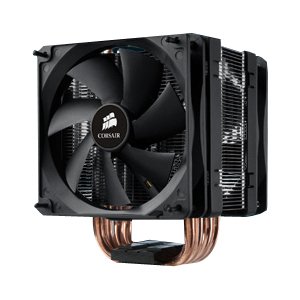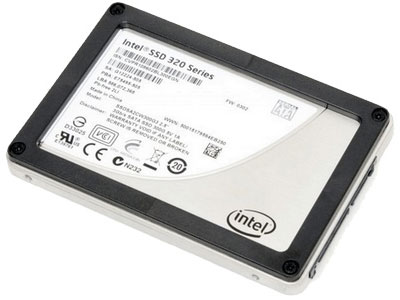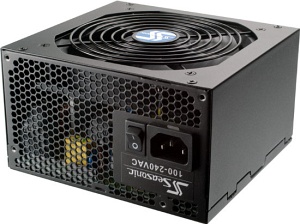Holiday 2011 Midrange System Buyer's Guide
by Zach Throckmorton on December 6, 2011 12:00 AM EST- Posted in
- Guides
- AMD
- Intel
- Sandy Bridge
- Llano
- Holiday 2011
- midrange
- NVIDIA
The King of Mainstream Processors
Intel's Core i7-2600K is actually not the king of mainstream processors—that honor is reserved for the more recently released Core i7-2700K. The only differences between the two chips are a 100MHz clockspeed advantage for the 2700K that carries a roughly $50 premium. That is, compared to the 2600K, the 2700K offers around 3% more performance at a cost increase of about 15%. Further, the 2700K does not reliably overclock substantially better than the 2600K. Thus, I consider spending the extra money on a 2700K unwise.
The Core i7-2600K's primary competitor is the Core i5-2500K. Compared the 2500K, the 2600K offers a slight clockspeed increase, and more importantly, Hyper-Threading. The 2600K is about $100 more expensive, so it's important to understand what applications and usage scenarios actually benefit from Hyper-Threading. You can see from Bench how the two CPUs compare. The short story is that if you use a lot of multi-threaded applications (like many photo and video editing titles), do a lot of file compression and decompression, or use specialized professional applications (3D Studio Max or CAD/CAM programs), then the 2600K is a wise investment. The average computer user, most gamers included, are really better off with the 2500K.
Rounding out the build

While the Core i7-2600K's stock cooler is sufficient for achieving respectable overclocks, for this build we're pairing the CPU with Corsair's A70. The A70 is a dual-fan heatpipe design that performs very well at an attractive after rebate price (and I've never had any issues with Corsair rebates). That said, there are many other similar CPU coolers that cost about $30, such as Cooler Master's popular Hyper 212 Plus that I've recommended previously.
Like the Biostar Z68 board this guide pairs with the Core i5-2500K, the ASUS P8Z68-V LE is also one of my go-to motherboards, for folks who want a few more bells and whistles than what the Biostar board offers. I've had good to great experiences with this board, especially in terms of its overclocking ability. Thus far these boards have been rock solid stable in the builds I've deployed with them. For a daily workhorse PC, reliability should be a primary consideration in choosing components.

Reliability is why we're going with an Intel 320 Series 120GB SSD for this PC. This SSD is neither particularly inexpensive nor particularly fast (though it will still put any HDD to shame). Instead, Intel's 5 year SSD warranty is the best in the market, and in my experience, Intel's SSDs are very reliable. (Yes, we know the 320 Series had some teething problems, but those appear corrected with the latest firmware.) We've bumped the capacity of the SSD up compared to the previous two builds so that more work-related applications can be installed on it, including disk space hogs like Adobe's CS5.5. While this build also includes the Samsung F3 1TB, it is important to consider whether you need a 7200RPM mainstream HDD or if instead you might be able to use a slower, less expensive "green" drive like Western Digital's WD10EARS.
Because some applications devour RAM, and because RAM is extremely inexpensive right now, we've bumped the DDR3 count from 8GB to 16GB—at the low cost of $60 total. While we're specifically recommending two kits of 8GB (2 x 4GB) G.SKILL Ripjaws X DDR3-1600 because of their current low price, RAM prices fluctuate frequently and wildly, so it's a good idea to comparison shop between different brands for the most attractive combination of price and speed.

SeaSonic is another component company with a well-deserved reputation for reliability. The S12II 430B is not cheap for a 430W PSU; however, it is very high quality, comes with a 5-year warranty, and is more than enough power for this system. It's also capable of supporting many upgrades, including a powerful discrete GPU if you become interested in GPU-accelerated computing (or gaming) down the road.
Finally, Fractal Design's Define R3 has the honor of housing all of these capable components. The Define R3 was recently reviewed by Dustin, and again I concur with his conclusions. I think this case is as good as it gets at the $100 price point, though there are other cases that perform similarly in terms of objective measures like temperature and noise. I simply find working with Fractal Design's cases in general to be a pleasure and really like their aesthetics.
| Component | Product | Price | Rebate |
| CPU | Intel Core i7-2600K | $320 | |
| CPU cooler | Corsair A70 | $45 | -$15 |
| Motherboard | ASUS P8Z68-V LE | $133 | |
| RAM | 16GB G.SKILL Ripjaws X DDR3 1600 (4 x 4GB, 2 kits) | $60 | |
| SSD | Intel 320 Series 120GB | $200 | |
| HDD | Samsung F3 1TB | $150 | |
| Power supply | SeaSonic S12II 430B | $75 | |
| Case | Fractal Design Define R3 | $100 | |
| Optical drive | LITE-ON iHAS-324-98B | $20 | |
| Operating system | Microsoft Windows 7 Home Premium 64-bit (OEM) | $100 | |
| Total: | $1203 | $1188 |
Summary
This Intel Core i7-2600K system rings up about 20% more expensive than the Core i5-2500K rig on the previous page. You lose the ability to game as this PC has no discrete video card (and the integrated Intel graphics are not gaming-level). Instead, you gain a larger SSD, increased overclocking capability, twice the RAM, and an extra four threads courtesy of Hyper-Threading. To be clear, the i5-2500K is likely a better fit for most computer users than this i7-2600K rig. However, this system can easily be turned into a gaming rig in the future, mitigating one of its drawbacks. And most importantly, certain more intensive applications like many video encoding titles will see more than a 20% improvement in performance for a 20% cost increase. If you can hang off buying a GPU for the time being, as we noted earlier the next generation AMD parts are due "real soon now" so you can grab one of those after the holidays.
We have a few more words of advice and general conclusions on the next page.










57 Comments
View All Comments
aznofazns - Tuesday, December 6, 2011 - link
"I don't consider this an "ass-whoopin". That would be considerably faster (50% or more) on all benchmarks. The i3 isn't even close to that."You're entitled to your definition of the term, but I consider anywhere from 25-50% better IPC an ass-whoopin. Take a look at Cinebench, Mediaespresso, and Photoshop benchmarks results (not just on Anandtech, but other reviews too).
In the multi-threaded situations in which the A8 takes the lead, it only wins by 10-15%. If you primarily use your PC for these types of workloads, the A8 may be worthwhile. But I'm going to go out on a limb here and assume the majority of users this build is designed for will gladly trade 10-15% multi-threaded performance for 25-50% higher IPC.
"One place where the i3 clearly shines over the A8 is gaming performance (assuming that both systems are using dedicated cards, which really isn't fair to the A8 since its integrated graphics are so good), but seriously, who even cares about gaming performance of PCs anymore?"
Tell that to all the hardcore PC gamers out there. With recent titles like BF3 and Skyrim, PC gaming is still very relevant. If you're not breaking that magical 60fps barrier in most games, you will notice. Also, with 120Hz monitors becoming more prevalent, don't you think gamers would find it worthwhile to invest in a faster CPU?
"It depends on workload and for most casual users, the differences would never be noticed anyway."
This is completely true, but what percentage of casual users would be spec-ing out and building a custom desktop like this in the first place? The argument that "you wouldn't notice anyway" doesn't justify spending the same amount of money on a CPU that performs worse in most situations.
bji - Wednesday, December 7, 2011 - link
Your points are all good and well taken. I personally happily trade per-core IPC for greater multithreaded efficiency because I have no single-threaded tasks that I need better performance on, but do have multithreaded tasks (parallel compiles of large software) that benefit immensely from multi core. But not everyone has the same needs as me, which was kind of my point; you can't say that one chip is objectively better than the other, it depends on your workload.I think that perhaps the real problem here is that there is some inconsistency between the concept of a build-it-yourself low-end system and the target audience.
Only enthusiasts are qualified to take the advice of a build-it-yourself article, and enthusiasts almost always will have requirements that take them out of the low-end system market.
And those enthusiasts who actually do need a low-end system probably have a better idea of the specific requirements that would guide their decisions on topics such as CPU choice better than the article writer ever could, so trying to create a one-size-fits-all CPU choice for the enthusiast is an exercise in futility.
aznofazns - Wednesday, December 7, 2011 - link
You definitely have a point here. Enthusiasts probably would not build a low-end machine like this to serve as their primary PC. And a "one-size-fits-all CPU" is definitely an exercise in futility, as you mentioned.I still like to think that *most* enthusiasts looking to build a budget rig like this (for basic gaming, HTPC, whatever) will be more satisfied with the i3 Sandy Bridge + HD6670 configuration.
It's always down to the individual user, but I think the Llano A8 chip would serve a better purpose in a slightly different type of system, like a low-profile mini-ITX HTPC.
Regardless, I think your arguments are valid, and your comment on the target audience is one that didn't really cross my mind.
xgrifter - Wednesday, December 7, 2011 - link
The A8 beats the i3 in gaming should just look at the article at pc perspective http://www.pcper.com/news/Graphics-Cards/Video-Per...aznofazns - Thursday, December 8, 2011 - link
That's looking at the integrated graphics performance of both chips. Pair each one with a mid to high end GPU and the picture changes completely.DanNeely - Tuesday, December 6, 2011 - link
For a lower level system mAtx makes a lot of sense; except that it should've been bundled with an mAtx case as well if not at a half width SFF one. It's target audience is unlikely to ever use an expansion card at all, except perhaps if they decide to go with internal wifi so they don't have to worry about the USB dongle falling off. Less space on the desk OTOH is always a bonus.FATCamaro - Tuesday, December 6, 2011 - link
I like your opinions & alternatives. You should write some articles yourself.medi01 - Tuesday, December 6, 2011 - link
It's funny to read about "superior gaming systems" without discrete graphic card.For this review to be honest, it had to include A3850 + discrete graphic card configuration. (which would still be cheaper than Intel config).
AMD motherboard costing more than Intel's look strange, to say the least.
Z Throckmorton - Tuesday, December 6, 2011 - link
Hi Mathieu - Thank you very much for your thorough, informative, and polite post! I very much appreciate it.I recognize that an i3-2100+6670 combination is in many ways superior to the A8-3850 I outlined in the guide. However, having assembled many of both systems, for the average user, it really is, in my opinion, a wash. Especially if you're not using a 1080P monitor, as I mentioned in the text of the guide. In my experience the i3 is better under lighter usage scenarios but the A8 wins in more involved multitasking scenarios. This isn't something that can be illustrated with benchmarks, it's really something you have to experience in person performing a familiar workflow. That, and the fact that the A8 idles and loads at a lower power draw are the primary reasons I gave it the nod in the guide. While the upgradeability of an i5 or i7 is definitely a bonus for an i3 rig, the primary intent of this article was to outline systems that will last for five years as they are described. And while enthusiasts have no trouble swapping CPUs and such, adding components as I mentioned in the other builds is always easier than swapping parts.
I do disagree with your assertion that a PCIe x4 slot will bottleneck a 6850. Poke around online and there are numerous articles illustrating that it will not.
Your point about mentioning where additional cables are necessary is appreciated - I've forgotten that in a previous guide - hopefully it won't take more than twice for me to learn my lesson.
Thanks again for your comments!
fmofmofmo - Tuesday, December 6, 2011 - link
But according to this site, Liano is more then 39x faster then core i3-2100http://sharikou.blogspot.com/2011/07/just-realized...
I'm bit sarcastic to post this link because the site is so amd-biased that it's funny.
AMD FX 8150 clearly beats Sandy Bridge i7-2700K
http://sharikou.blogspot.com/2011/11/amd-fx-8150-c...
AMD FX does frag Sandy Bridge after all
http://sharikou.blogspot.com/2011/10/amd-fx-does-f...